Free Airdrop Season 7 is LIVE! Answer fun questions or do simple tasks to earn rewards from the $30K BitDegree prize pool. Participate Now ! 🔥
One of the tougher choices that a cryptocurrency miner has to make is choosing the right piece of hardware to use when mining. Different types of coins have different needs and requirements to mine, which in turn requires different types of technology. In this guide, we’ll cover Litecoin mining hardware and talk about the best Litecoin miners out there.
First of all, I’ll tell you about Litecoin mining and mining hardware in general - what it is, the different types of hardware you can use and why it’s better to use *this* type of equipment rather than *that* type of equipment.
After that, we'll check out the best Litecoin mining rigs that the market can offer, go over their pros and cons and see if we can make out a clear winner.
Since Litecoin mining is not the only way to get this cryptocurrency, you should consider buying or trading it on a reliable cryptocurrency exchange. A couple of the recommended options include Binance and KuCoin.

|

|
|
|---|---|---|
| Advanced Users & Beginners | Best for Buying & Selling Crypto with Small Fees | |
| Turkey, Argentina, Vietnam, Ukraine, + 180 more | United Kingdom, India, Russia, Mexico, + 150 more | |
| See All Coupons of Best Exchanges | See All Coupons of Best Exchanges | |
| One of the leading crypto exchange platforms in the industry. | A reliable and well-established cryptocurrency exchange platform. | |
|
See TOP10 Brands
Read review |
See TOP10 Brands
Read review |
Table: General information about the Binance and KuCoin crypto exchange platforms
Now, let's begin with understanding what Litecoin mining is.

Did you know?
Subscribe - We publish new crypto explainer videos every week!
Crypto Mining Explained: How to Earn From Mining Bitcoin? (Animated)


Table of Contents
What is Litecoin (LTC) Mining?
If you're searching for Litecoin mining hardware, you probably know what Litecoin mining is. However, if by any chance you don't, or you want to refresh your knowledge, let me help you.
Latest Deal Active Right Now:Head to BitDegree Missions, gather as many Bits as possible & claim your stake of the $30,000 Prize Pool! Don't waste your time & start collecting Bits by completing Missions and referring friends.
Firstly, it's important to note that Litecoin was created as a fork of Bitcoin in 2011 with the goal of creating a cryptocurrency that scales more effectively than Bitcoin. The hashing algorithm of Litecoin is called Scrypt (it's an alternative to Bitcoin's SHA-256 algorithm). You should keep this in mind when choosing mining hardware for Litecoin.
Litecoin mining itself is a Proof-of-Work-based process in which miners validate transactions and create new blocks on the blockchain. In order to do that, they basically need to solve hard mathematical equations known as nonces. In return, they get rewarded with Litecoin, this way creating new coins.

How does the actual mining process happen? In a nutshell, you run a mining program on your mining software and it tries to solve the nonce by randomly generating various answers. However, you are not the only one trying to solve the nonce – you are part of a mining network. The first miner to solve the nonce gets rewarded with Litecoin.
Now, a question might arise – what is the Litecoin block reward? As of writing, the Litecoin block reward is at 12.5 LTC. However, Litecoin halving is planned to occur in August 2023, which will result in its block reward being reduced to 6.25 LTC.
On average, one Litecoin block is mined in around 2.5 minutes. So, if you're wondering how long does it take to mine 1 Litecoin – it takes around 12s. However, after the Litecoin halving will take place, this time period will double.
Now that you know all the basic information about mining Litecoin, let's talk about mining hardware.
Understanding Mining Hardware
Cryptocurrency mining hardware is more often referred to as rigs. To put it very simply, it’s a piece of machinery designed to solve math problems and in turn mine the desired crypto coin.
Litecoin mining hardware is similar to other crypto mining rigs in the sense that it operates with scripts - functions that let users utilize their CPUs to mine cryptocurrencies from designated sites.
However, as with every other coin, Litecoin has its specific parameters that make some rigs better than others when it comes to the actual mining part.
Let’s cover all the different Litecoin mining hardware types.
Different Types of Litecoin Mining Hardware
You’ll find that there are three different types of Litecoin mining hardware to choose from - the CPU, GPU, and ASIC.
- CPU. CPU mining utilizes your CPU to mine the desired coin (in this case, Litecoin). It is a cheap method to mine cryptos, but the downside is that it’s EXTREMELY slow - often almost unbearable. CPU mining can be done at any time from your personal computer that has any of the main operating systems (Windows, Mac OS, and Linux).
- GPU. This type of mining is the main type you’ll encounter. GPU rigs use graphics cards to extract your desired cryptos. It’s fast and effective (that’s why it’s so popular) but can get VERY expensive.
- ASIC. ASICs - Application-Specific Integrated Circuits - are considered to be the best Litecoin miners. There are many different types of ASICs, but these ASICs are specifically designed and created with one purpose in mind - to mine the hell out of Litecoins.
These three types of Litecoin mining hardware paint a pretty good picture of the choices that you have when thinking about what mining technology to invest in.
Something to Consider
Before actually making a choice, do note that even though there are quite a few options to pick from, they vary significantly in their quality and performance. While CPU hardware is considered to be the worst choice for mining Litecoin (or any other cryptocurrency at that), ASICs take the lead and are just perfect for that task.
Naturally, though, everything isn’t simply black and white - CPU mining requires virtually no initial investment or specific equipment (although the electricity prices might give you a heart attack!) while the ASICs are quite expensive and require some initial knowledge about crypto hardware assembly.
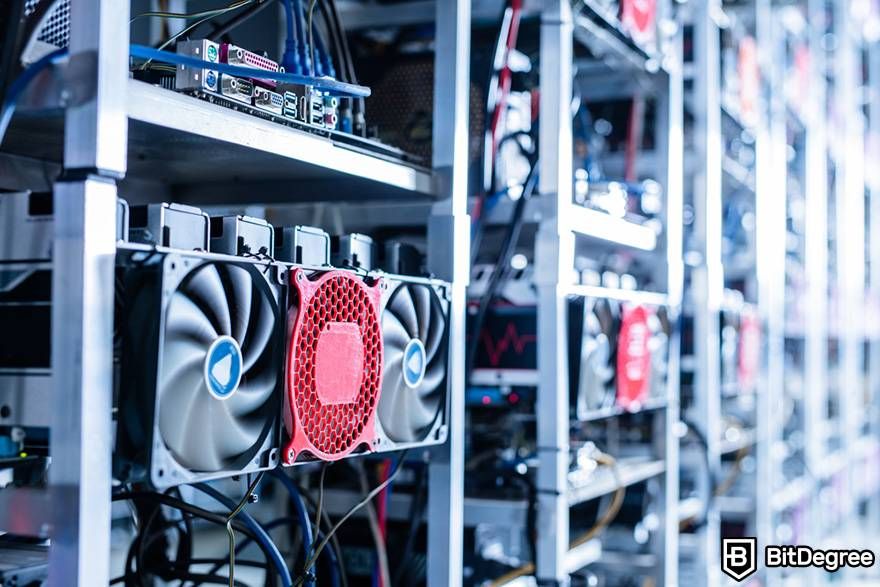
Besides, when choosing the best hardware for Litecoin mining it's also especially important to consider its hashing power. It will determine how fast your mining process will be (the faster the better).
Also, if you possess huge amounts of Litecoin, you should make sure to use a reliable wallet. The most secure ones are hardware wallets. I'd recommend checking out Ledger Nano X and Trezor. However, if you're looking for an online wallet, you should definitely give Binance a try.
Now that you know the differences between the three types of Litecoin mining hardware, as well as the two main mining types, let’s jump straight into the Litecoin miner list! Quick disclaimer, though - the list isn’t organized in any specific order.
Best Litecoin Mining Hardware
Here, you'll find examples for each type of Litecoin mining hardware. Let's start off with ASICs.
ASICs
By popular opinion, the Antminer L3+ is a hands-down winner when it comes to Litecoin ASICs or even Litecoin mining hardware in general.
This ASIC machine was released back in 2017 by a company called Bitmain. The company has accumulated a reputation for being the world leader in the field of cryptocurrency mining hardware. Over the years, they have released different versions of specific Litecoin ASICs, and the Antminer L3+ is considered by many to be the best thing to ever happen for cryptocurrency mining.
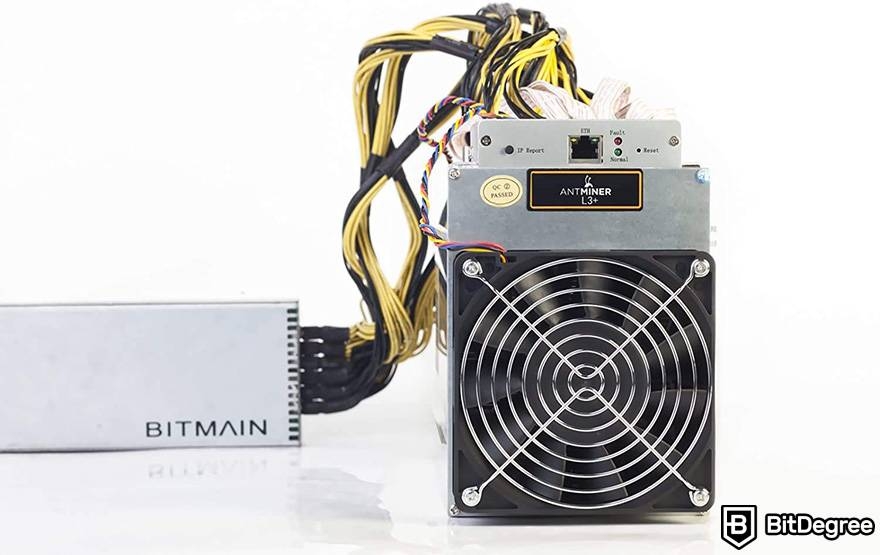
Another side of the coin does exist, however. Bitmain has been under heavy fire - they have been exposed for adding a backdoor to their products. As of now, any attempts in scamming haven’t been exposed, but this did impact the company’s reputation.
If you’re thinking about investing in this Litecoin ASIC, do keep in mind that used ones start from at least $350 and can go up to $800 for a new one! On the other hand, this IS considered to be the best Litecoin miner in the game.
GPUs
GPU mining is the next best thing when it comes to Litecoin mining hardware.
If you do a little bit of digging, you’ll find out that Nvidia and AMD are the two companies that produce the leading graphics cards in the field of Litecoin mining rigs. The Nvidia GeForce RTX 3090 and the AMD Radeon RX 5700 XT are the leading GPUs and their competitors have had a very tough time trying to match the quality of these two products.
To witness significant amounts of profit whilst using GPUs to mine, however, you have to overcome a few obstacles. First of all, you should find the cheapest possible places to buy your GPUs. To have a successful mining rig that would produce noticeable profit it would have to contain at least five of the best GPUs.
Such rigs could cost anywhere from $2500 to $5000 (including the frame, cooling systems, motherboards, etc.).

Furthermore, it won’t matter if you have great and powerful Litecoin miners if all of your earnings (or more!) are thrown right back into the electricity bills. To be able to profit from cryptocurrency mining, you’ll have to figure out a way to minimize your electricity costs.
One of the ways to do this is to find some sort of a spacious building or room in a place that has cheap and affordable electricity costs. The spaciousness will help with cooling needs.
GPU cryptocurrency mining is also the most popular cloud mining method. Cloud mining is very simple - you “rent” a rig’s mining service from a host (the person or company to which the rig belongs to) for a while. During this period, all of the revenue that the rig generates is passed on to you (except a few small fees).
Cloud miners usually have multiple rigs made out of countless numbers of graphics cards. To be honest, they are one of the biggest reasons why it became so hard to find specific GPUs in shops and online retailers.

Did you know?
Subscribe - We publish new crypto explainer videos every week!
What is a Crypto Bull Run? (Animated Explainer + Prediction)



- Secure and reliable
- Accepts fiat currencies
- Lots of trading options
- Reputable exchange
- Accepts fiat currencies
- Offers various trading options

- Fiat currencies - accepted
- Simple to use
- Accepts only the most trustworthy cryptocurrencies
- A leading cryptocurrency exchange platform
- Best for beginner investors
- Accepts fiat currencies

- Fully reserved and transparent
- Multiple tradable asset classes
- Over 300 supported cryptos
- Over 300 cryptocurrencies
- Secure & transparent
- Fully reserved
CPUs
CPU miners hardly ever make it to “best Litecoin miner” lists. The main reason behind this is that CPU mining just isn’t profitable - if you’re planning to mine cryptocurrencies like Bitcoin, Ethereum, Ripple or - in this case - Litecoin, it might take you months (if you have a slower computer - years!) to notice any sort of profit. For most people, this isn’t one bit viable.
By the way, when it comes to cryptocurrencies, it's crucial to keep them in secure hardware wallets. Ledger Nano X and Trezor Model T are highly recommended ones.
CLAIM 10% DISCOUNT
On Best-selling Ledger Bundles!
For a limited time only, get Top-rated Ledger bundles for yourself and your loved ones with a 10% Ledger discount code. Take advantage of this valuable Ledger deal NOW!
Another possible scenario is that you might even lose quite a bit of money from electricity costs. CPU mining usually produces extremely low amounts of profit per day but uses excessive amounts of power.
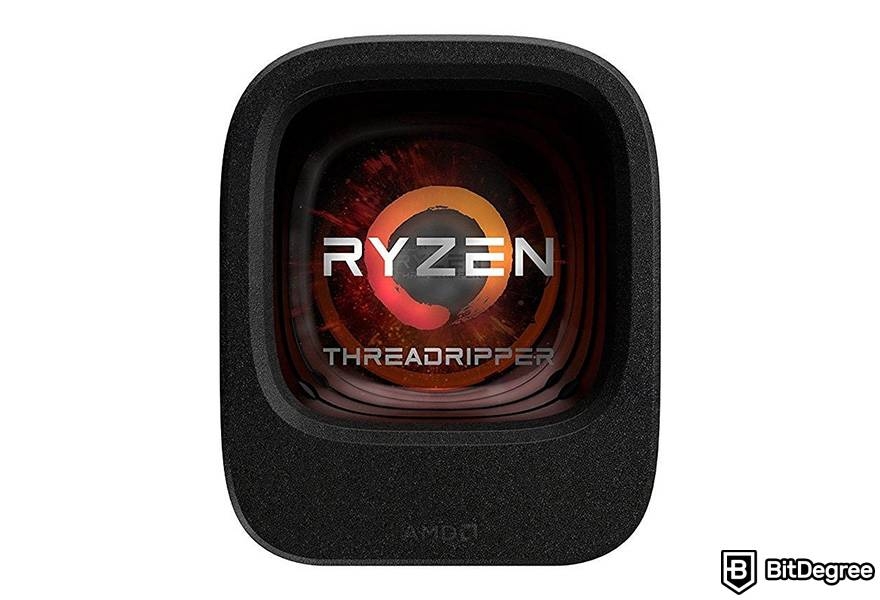
On the other hand, CPU mining is still being relatively commonly used for one simple reason - it’s accessible by almost anyone. All you need is a personal computer and you can pitch in into the world of cryptocurrency mining.
By popular opinion, the go-to processor for Litecoin mining is the AMD Ryzen Threadripper 1950X. It’s a 16 core processor that has a huge L3 cache - this allows it to mine a lot of the popular cryptocurrencies and altcoins.
The only downside of this processor is that it requires excessive amounts of power AND is quite expensive in itself - a price of a new AMD Ryzen Threadripper 1950X could go anywhere around $650 to almost $900.
You've Got Your Mining Hardware, What Else Do You Need?
What you’ll also need to think about after you obtain and set up your rig is the software that you’re going to use. After all, the best Litecoin miner deserves the best available software.
If you're using an ASIC miner, there is a high probability that it came with its own mining software. However, if not, you need to choose your own.
When looking for good and reputable software, always prioritize the aspects of security, mining and hashing speeds, customer support and transparency. These are the criteria that a great cryptocurrency mining software has to both have and constantly update.
Security is the main key, though - if a software isn't secure, don't even bother dealing with it in the first place. There's no point - all that's going to happen is that you might just eventually get hacked and all of your crypto coins get stolen. So choose carefully!
After this point, you’re set! All that’s left to do now is to enjoy the feeling of becoming a legitimate Litecoin miner (and reap the rewards, of course).
Should You Mine Litecoin?
Now that you’re familiar with the Litecoin mining hardware available, what is left to talk about is what you should take into account before starting mining.
Put simply, you must always consider these factors:
- Hardware price
- Potential profit
- Energy use and additional costs
- Hashing power
- The type of mining you plan to take part in
- Mining software
First of all, you should do some simple math. Grab a calculator and, if you’ve already chosen your preferred method of Litecoin mining, calculate the initial cost for obtaining the device (CPU Litecoin miners have an advantage here) and all of the needed maintenance add-ons.
Now that you have a price tag in your head, try and figure out possible electricity and cooling costs - look up the electricity prices in your area and multiply it by the power of your device. Add the result to the initial number.
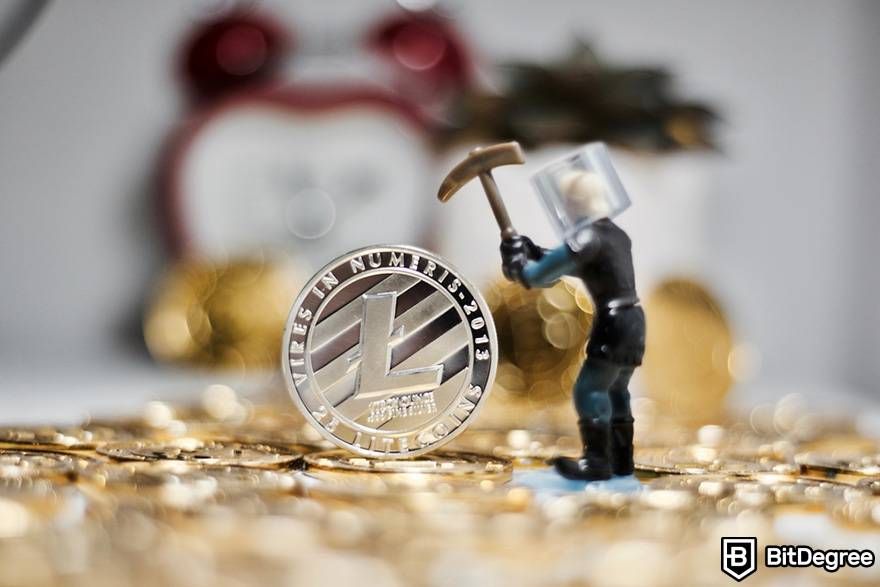
Keeping the speed and power with which your rig works in mind, calculate the potential earnings your Litecoin mining rig could produce in a month. You’ll need the average amount - don’t go with the highest or the lowest numbers.
After you’re done, subtract this number from the first one. Look at the result.
If the number you’re seeing is negative (and the amount you’ll make will pay back what you lost from investing into your hardware in about twenty years), that means that there is no point for you to start mining Litecoin yourself - at least not in the current position that you’re at.
If you’re adamant about getting into the world of crypto at any given cost, you could try cloud mining or think about a cheaper alternative when it comes to hardware.
However, if the number didn’t shock you, and if it’s possible to start profiting from Litecoin mining in less than a decade - congratulations! You can officially start thinking about becoming a professional crypto miner.
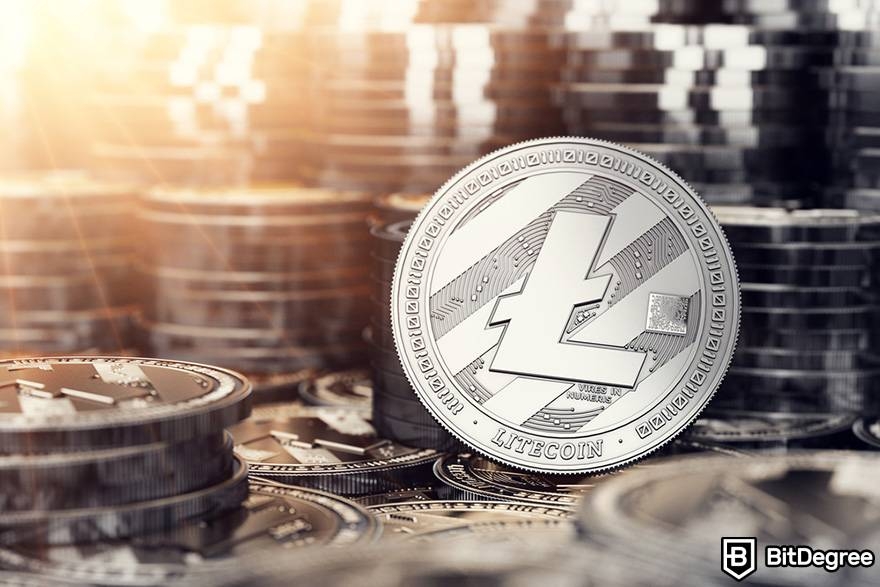
Lastly, you should also consider joining a mining pool. Just to take a few steps back, note that there are two major types of mining - solo and pool mining. Solo mining, as the name suggests, is about mining individually. So, if you find a block and mine it, you'll get the whole block reward just for yourself. However, it might take some time to actually find a block alone.
Pool mining, on the other hand, allows you to find blocks faster because miners combine their hashing power in a pool. However, being a part of a mining pool also means that you'll have to split the reward with other miners and you might not have a say in when another block should be opened. Besides, do note that each mining pool has a fee for joining it.
That's it. You know all the information you need to start your Litecoin mining journey!
Conclusions
If you’ve never had any contact with any type of cryptocurrency mining hardware, it might be a bit difficult to grasp some things in the beginning. The hardest part is probably the wide variety of choices that are thrown in front of you.
However, there are plenty of online forums, chat rooms, groups, and other tightly knit communities that are dedicated to researching and investigating every single topic revolving around cryptocurrencies, starting from price predictions up to best and worst hardware and software available.
Another thing to keep in mind is that hardware tends to age. As good as a machine that you’ve managed to acquire, it will eventually have run its course. Of course, Litecoin mining hardware that is constantly taken care of will last much longer than one that has never been cleaned or checked. But everything has an expiration date.
For this simple reason, it would be a good idea to always keep one eye on the market for new Litecoin mining hardware. Every year, there are new supermachines released to the general public. The only problem is that they don’t tend to linger - people sweep them off the physical and digital shelves. So, you have to be fast!
The final aspect that should be mentioned is that you must keep your Litecoins safe at all times. To do so, use reliable cryptocurrency wallets, such as Ledger Nano X and Trezor Model T.
CLAIM 10% DISCOUNT
On Best-selling Ledger Bundles!
For a limited time only, get Top-rated Ledger bundles for yourself and your loved ones with a 10% Ledger discount code. Take advantage of this valuable Ledger deal NOW!
The content published on this website is not aimed to give any kind of financial, investment, trading, or any other form of advice. BitDegree.org does not endorse or suggest you to buy, sell or hold any kind of cryptocurrency. Before making financial investment decisions, do consult your financial advisor.














